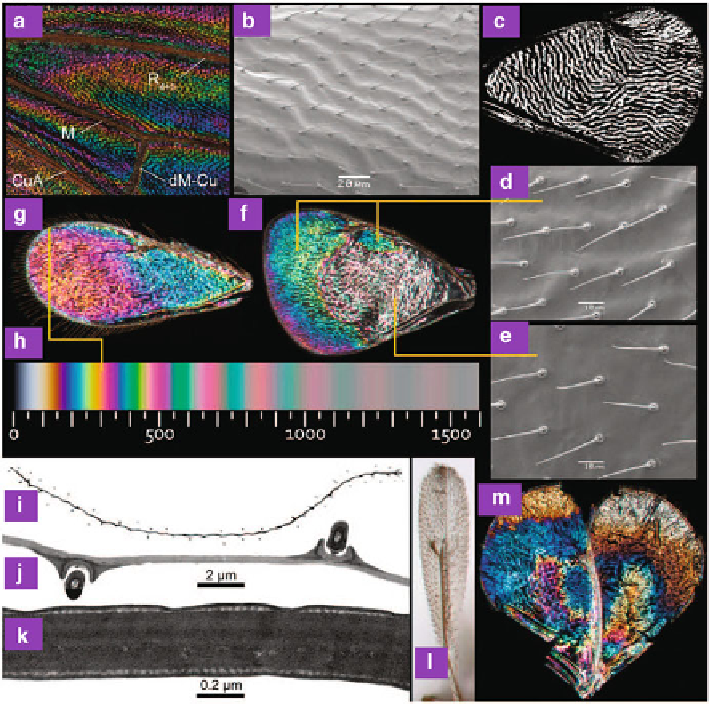Biomedical Engineering Reference
In-Depth Information
Fig. 8.8
Color and structural features of the wings in small chalcidoid wasps and
Drosophila
showing strong non-iridescent structural-color patterns. (
a
) Midsection of the wing of
D.
melanogaster
.(
b
) SEM image of the forewing of
Chrysocharis
sp. (
c
) Duotone image of (
b
).
(
d
)-(
f
) Forewing of a male
Achrysocharoides latreillei
. SEM images of corrugated parts and
smooth central parts are shown in (
d
)and(
e
), respectively. Resulting structural-color patterns are
indicated in (
f
). (
g
) Color pattern of female
Asecodes congruens
.(
h
) Calculated structural colors
for a thin film with a refractive index of 1.57 in air under normal incidence with scales indicating
its thickness in nanometers. (
i
) Composite duotone image of a whole apical cross-section of the
forewing of
Achrysocharoides atys
.(
j
)and(
k
) TEM images of cross-sections of the apical part of
a forewing from the same species as in (
g
). (
l
) Left “balloon” forewing of male
Omphale
sp. in
frontal view. (
m
) Unequal organization of dorsal (
left
) and ventral (
right
) membranes of an opened
left forewing of a male
Achrysocharoides platanoidae
(Reproduced from [
38
])
SEM characterizations revealed that all iridescent barbules are composed of a
central medullary layer surrounded by an outer keratin cortex layer. The barbules
are about 2
4
m in thickness, while the thickness of the medullary layer varies
from 1 to 3
m. The medulla consists of randomly dispersed melanin granules in

